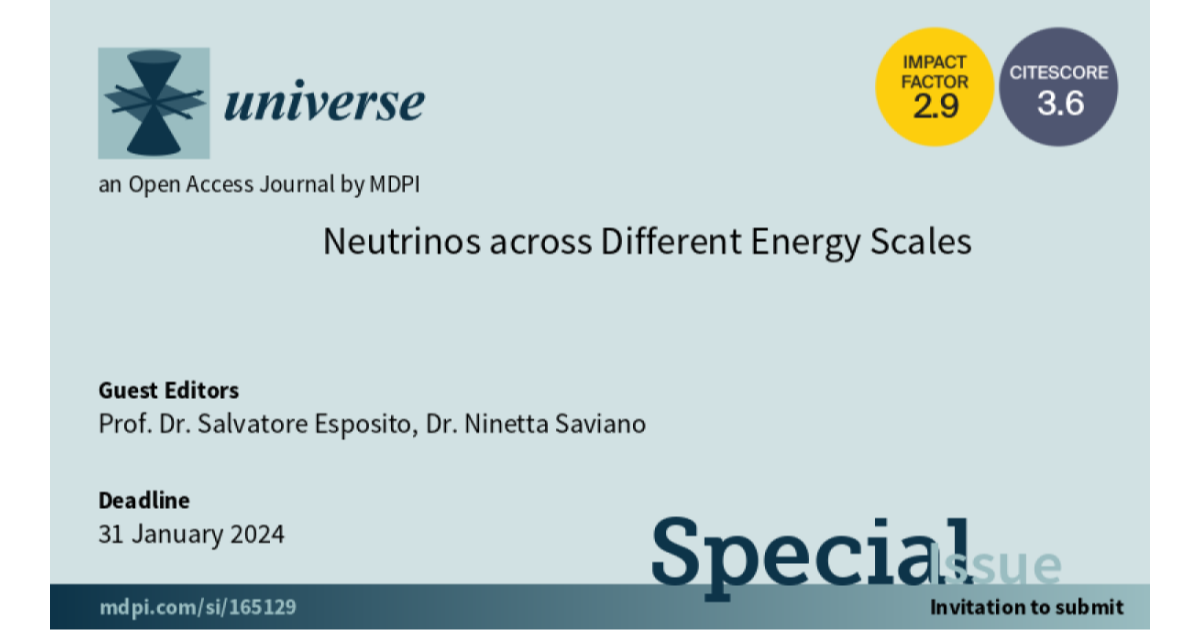Neutrinos across Different Energy Scales
A special issue of Universe (ISSN 2218-1997). This special issue belongs to the section "High Energy Nuclear and Particle Physics".
Deadline for manuscript submissions: 30 June 2024 | Viewed by 3415

Special Issue Editors
Interests: astroparticle physics; theoretical physics; history of physics
Special Issue Information
Dear Colleagues,
Thanks partly to dedicated large experimental programs that are underway, advances in neutrino physics are rapidly evolving such that the need to take stock of the current situation in this field of research is particularly felt by various scholars of different backgrounds. This Special Issue is intended to meet that need. It is devoted to discussing the theory and phenomenology of neutrino physics (both in standard sectors and beyond standard sectors) at different energy scales, from meV to 1019 eV, also reviewing the present experimental situation. In particular, among the various natural sources of neutrino fluxes, we will explicitly consider a) relic neutrinos from the primordial Universe at very low energy; b) solar neutrinos and supernova neutrinos in the energy range from tens to a few hundred MeV; c) atmospheric neutrinos at energy around GeV; and d) high- and ultrahigh-energy neutrinos emitted from astrophysical accelerators. Invited contributions from experts in any of these fields will be complemented by contributions illustrating the state of the art on the topics covered by the present Issue, which are therefore welcome from any scholars (subject to peer review).
Prof. Dr. Salvatore Esposito
Dr. Ninetta Saviano
Guest Editors
Manuscript Submission Information
Manuscripts should be submitted online at www.mdpi.com by registering and logging in to this website. Once you are registered, click here to go to the submission form. Manuscripts can be submitted until the deadline. All submissions that pass pre-check are peer-reviewed. Accepted papers will be published continuously in the journal (as soon as accepted) and will be listed together on the special issue website. Research articles, review articles as well as short communications are invited. For planned papers, a title and short abstract (about 100 words) can be sent to the Editorial Office for announcement on this website.
Submitted manuscripts should not have been published previously, nor be under consideration for publication elsewhere (except conference proceedings papers). All manuscripts are thoroughly refereed through a single-blind peer-review process. A guide for authors and other relevant information for submission of manuscripts is available on the Instructions for Authors page. Universe is an international peer-reviewed open access monthly journal published by MDPI.
Please visit the Instructions for Authors page before submitting a manuscript. Submitted papers should be well formatted and use good English. Authors may use MDPI's English editing service prior to publication or during author revisions.
Keywords
- astroparticle physics
- neutrino physics
- primordial Universe
- relic neutrinos
- supernova neutrinos
- solar neutrinos
- atmospheric neutrinos
- high-energy neutrinos
- physics beyond the Standard Model






